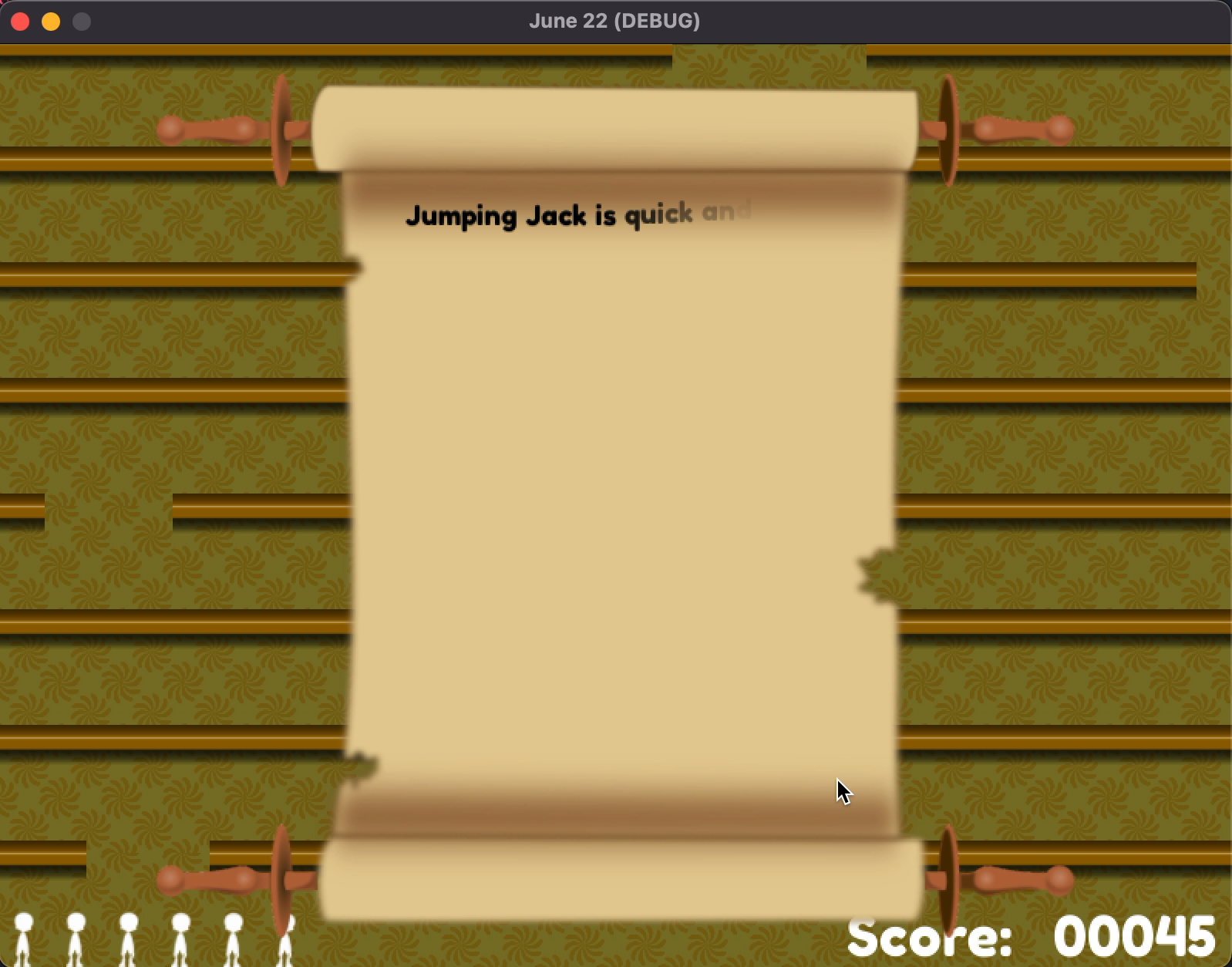Just a quick update this time, this game is progressing really fast due its simplicity.
This time round I implemented the very simple “hazards” or baddies. They are really dumb, just appear at random based on the level, one new hazard per level after level 0, and move right to left and go up the platforms as they go. I’ve created only a single, static image for the enemy at this point, in Blender, of a toy train. There are various mixed hazards in the original game, with no obvious theme, so I’ve decided to apply one, toys. As far as I can tell all of the hazards in the original game can readily be created as toys. Planes, trains, dinosaurs, etc. I’ll be adding animation to them as part of the polishing phase. They don’t need to interact with the gaps in the platforms at all, so movement and logic is very simple, just using a Godot Area2D node to spot overlap with the player.
As this is the majority of the parts in place for the actual game-play, the
remaining part was to implement the reward that you get as a player as you
progress through the levels. This takes the form of a four verse rhyme that is
revealed line-by-line as you progress through the levels,
“The Ballad of Jumping Jack”. I wanted to make this look nice, so spent some
time experimenting with different reveal animation methods. There are some nice
features in Godot, one of which is the ability to create custom “effects” that
you can apply to RichTextLabels. These are small pieces of code that can
influence each individual character in part of the text in a rich text label,
identified using custom “bb-code” markup. However, it’s a pretty new and
underused feature, and as such is missing some key functionality, in this case
the ability to determine the length of the text segment the effect is affecting.
I tinkered for a while, and found that I could code a nice “reveal” transition
by doing it in two phases. The handler method on your custom effect
_process_custom_fx, gets called once per character per frame, with details of
the character, its location in the text, the elapsed time etc. I found I could
allow this to run through the entire text segment once, setting the alpha to 0.0
and thus making the entire message segment invisible, and checking if the
character index ever became less than the last one, at which point it’s
reasonable to assume the frame has finished and the next frame started. Using
this method I could up-front determine the length of the text segment, and
using this I could calculate how to fade the characters in over time so that
the entire message segment is fully visible in the chosen time. So, armed with
this, I coded up a simple fade-in and float down animation for each character
over time so that each line seems to magically appear on the page as it
animates, as you can see from the short video below. The bb-code to do this
simply becomes…
[fade-in duration=5]This would be a line of the rhyme...[/fade-in]
…where [fade-in] is the custom bb-code tag registered with my custom effect.
The concept of elapsed time in a RichTextEffect is started as soon as the node enters the tree. So to control the animation start time for each line, I broke the rhyme into one RichTextLabel per line and saved them as Scenes in Godot, and then in the code that manages the scroll itself, load each one in turn as a level is completed, add it to the children list for the scroll container node, adjust the scroll to ensure it is visible, and everything else just works, the system sees that the line has just been added to the tree, so starts the timer and the effect processes the characters accordingly to fade the new line into view.


